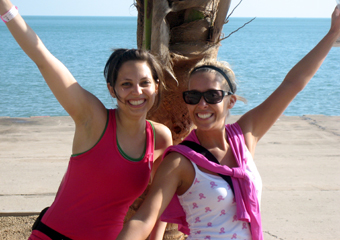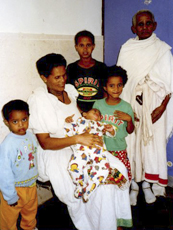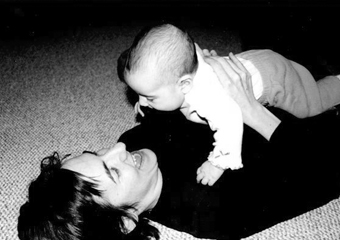Who is a Middle East refugee?
Permanent link

Israeli Prime Minister Benjamin Netanyahu meets with U.S. President Barack Obama at the White House in Washington on May 18, 2009. (Moshe Milner/GPO/Flash90/JTA)
I read an article this morning posted by Daniel Dagan written before President Obama delivered his big speech in Cairo yesterday. Click here to read President Obama’s speech on Facebook in the form of status updates. You can also watch a video of President Obama giving his speech.
Dagan is a Jewish reporter who was born in Egypt and was forced to leave his home as a child refugee— a consequence of the Arab-Israeli conflict. In this fascinating article Dagan shares many insights and anecdotes about his childhood and his multiple encounters with Mubarak and poses the question to President Obama, “Why don’t you ever mention me?”
Here is a short excerpt from the article:
I was in the reception line, among a row of political bigwigs and illustrious guests, at Mubarak's Cairo palace. A routine handshake, with a word of greeting in Arabic. Then I took Mubarak by surprise with the comment that I used to play on the property as a child.
But he simply didn't believe me, so I dipped into my vest pocket and pulled out my birth certificate. He read it out loud - in Arabic, of course: "Born at 1 Ibrahim Street, Heliopolis, Cairo..."
The president was almost left speechless. "Ibrahim? I know this street; it's just around the corner. So you grew up here?"
"Yes, I did," I confirmed. And I told him that the headquarters of his regime used to be called the Heliopolis Palace Hotel and was considered the most beautiful residence in Africa. When I was a child living in the neighborhood, I played there often, as the manager of the hotel, the Belgian Baron Empain, was a friend of our family.
Spontaneously, Mubarak invited me to stay in Egypt a little longer and to come back (which I did a number of times). To Rau standing next to him, he said with feeling: "Thank you for bringing an Egyptian brother with you."
DURING THAT BRIEF meeting I was too polite to react on the spot. But the dramatic events now unfolding in my native town offer a good opportunity to put a straight question not just to Mubarak and other Arab and Muslim leaders, but also to Obama: When you address the problem of refugees forced to leave their homes as a consequence of the Arab-Israeli conflict - as surely you will - do you intend to consider all the refugees affected by this ongoing confrontation? Why have you failed until now to mention the 1 million Jews who fled Arab countries and sought a new home in Israel? Why have you ignored the fate of these large, ancient communities across the Arab and the Muslim world that have all but disappeared?
Why don't you ever mention me?
Good question.
Many Jewish-Arabs (around a million) were forced out of their homes throughout the Middle East as a result of conflict with Israel beginning in the second half of the 20th century. But we don’t hear much about them these days. They are another piece to a large, complicated puzzle that makes up the Arab-Israeli and Palestinian-Israeli conflict. I’m always searching for more knowledge and insights to add to my understanding of Israel and the Middle East. If you, like me, are still trying to educate yourself on the issues, than I urge you to read this article in its entirety.






.jpg)



